AI Coaching & Wearable Tech in Ultramarathon Training (2025 Guide)
🏃♂️ Lost Pace here! If you’ve ever run a 100-miler and wondered if your watch would die before your legs, welcome—you’re in the right place.
Let’s face it: Ultramarathon training is no longer just about running until you’re tired and hoping for the best. These days, your wrist is a data center. Your phone? A motivational speaker. And AI? Well, it might just know your legs better than you do.
This guide is for anyone who wants to train smarter, not just harder—using the latest in AI coaching, power meters, HRV, and those endless “Coros vs Garmin” debates. Whether you’re a tech geek, a diehard Strava user, or just want to survive your next ultra with a smile, you’ll find something here to make the next finish line feel a little closer.
Ready? Lace up. Let’s dive in!
Let’s face it: Ultramarathon training is no longer just about running until you’re tired and hoping for the best. These days, your wrist is a data center. Your phone? A motivational speaker. And AI? Well, it might just know your legs better than you do.
This guide is for anyone who wants to train smarter, not just harder—using the latest in AI coaching, power meters, HRV, and those endless “Coros vs Garmin” debates. Whether you’re a tech geek, a diehard Strava user, or just want to survive your next ultra with a smile, you’ll find something here to make the next finish line feel a little closer.
Ready? Lace up. Let’s dive in!
What is AI Coaching?
🤖 Let’s be honest: AI coaching sounds futuristic—like something that should come with a robot trainer shouting “Go faster!” in perfect monotone. But real AI coaching is way cooler (and quieter).
At its heart, AI coaching means algorithms that analyze your training data—pace, heart rate, power, recovery, sleep—and spit out personalized advice faster than you can tie your shoes.
So, what can an AI coach do for ultrarunners?
At its heart, AI coaching means algorithms that analyze your training data—pace, heart rate, power, recovery, sleep—and spit out personalized advice faster than you can tie your shoes.
So, what can an AI coach do for ultrarunners?
- Build you a daily or weekly plan based on your fitness and your calendar
- Adapt workouts if you miss a session or suddenly feel superhuman
- Predict fatigue, recovery, and even potential injuries (sometimes…)
- Analyze race data to find your weaknesses (and maybe your secret strengths!)
💡 Lost Pace Tip: Don’t let the bots scare you!
You’re still the boss. AI is just your assistant—your run, your rules. Sometimes, ignoring the algorithm and running by feel is the most “intelligent” decision of all.
⚡ Stryd Critical Power: What It Is & Why It Matters
Ever feel like pace and heart rate just don’t cut it on hilly, rocky, or wild terrain?
Welcome to the world of Stryd critical power—where your effort is measured in watts, not just speed or heartbeats.
Stryd’s Critical Power (CP) is a personalized number—think of it as your “threshold power”—the sweet spot where you can run strong for a long time, but not forever. It adapts to your fitness, updates as you train, and, unlike old-school pace charts, doesn’t get confused by uphills, downhills, or sudden wind gusts.
How does it work? Stryd analyzes your toughest efforts—maybe a hard 30-minute push, or segments from your latest races—and uses that to set your CP. From there, you get “power zones” for easy, moderate, and hard runs, tailored just for you.
Pro Tip: If your CP seems low, don’t panic. It usually means you need a few harder sessions in the mix—or maybe just some extra recovery (your AI coach will nudge you).
Stryd’s Critical Power (CP) is a personalized number—think of it as your “threshold power”—the sweet spot where you can run strong for a long time, but not forever. It adapts to your fitness, updates as you train, and, unlike old-school pace charts, doesn’t get confused by uphills, downhills, or sudden wind gusts.
How does it work? Stryd analyzes your toughest efforts—maybe a hard 30-minute push, or segments from your latest races—and uses that to set your CP. From there, you get “power zones” for easy, moderate, and hard runs, tailored just for you.
- Zone 1-2: Easy, all-day effort—long runs, recovery days
- Zone 3-4: Tempo & threshold—raising your race power
- Zone 5+: Sprints & “sufferfests”—short but spicy
- Less guesswork on trails—power adapts to climbs, mud, and sand
- Consistent effort on race day (no more blowing up at mile 40!)
- Recovery tracking: If your power drops, it’s time to rest—not grind
Pro Tip: If your CP seems low, don’t panic. It usually means you need a few harder sessions in the mix—or maybe just some extra recovery (your AI coach will nudge you).
💡 Lost Pace Wisdom: Power over pace, always?
I still love a good old tempo run, but when it’s 3am, you’re deep into a 100-miler and the trail’s gone vertical, only “watts” can tell you the truth. Trust the numbers, trust yourself.
💓 Best HRV Apps for Ultra Runners
Let’s be real: Sometimes, your legs feel trashed but your AI coach says “green light!”
Enter the world of HRV app ultra—where heart rate variability (HRV) bridges the gap between what your brain wants and what your body needs.
What’s HRV anyway? Simply put: HRV is the tiny, millisecond differences between your heartbeats. High HRV? You’re rested and ready. Low HRV? Time to chill, friend.
So, which apps do ultra runners actually trust?
Pro Tip: If your HRV tanks, it’s not a badge of honor. It’s your body waving a tiny white flag. Recovery isn’t weakness—it’s what keeps you racing.
What’s HRV anyway? Simply put: HRV is the tiny, millisecond differences between your heartbeats. High HRV? You’re rested and ready. Low HRV? Time to chill, friend.
So, which apps do ultra runners actually trust?
- HRV4Training: Quick morning check with just your phone’s camera or a chest strap—an athlete favorite.
- Elite HRV: Deep-dive analytics, free tier, and easy syncing with most sensors.
- Welltory: Gorgeous visuals, stress & energy tracking, works with wearables or your phone.
- Whoop & Oura: Wearables that auto-track HRV all night and nudge you when it’s time to back off (or push!).
- Plan tough workouts when your body is truly ready
- Avoid burnout and overtraining by spotting “yellow” days before you crash
- Fine-tune recovery and sleep—know when to rest or send it!
Pro Tip: If your HRV tanks, it’s not a badge of honor. It’s your body waving a tiny white flag. Recovery isn’t weakness—it’s what keeps you racing.
💡 Lost Pace Wisdom: Numbers aren’t everything!
I once ignored a low HRV, did hill repeats, and paid the price with a week of dead legs. Trust your data, but trust your instincts too.
⌚ Coros vs Garmin for 100 Mile Ultras
If you run ultras, you’ve heard the debate: Coros vs Garmin 100M.
Which GPS watch will outlast your legs—and maybe your sanity—on race day?
Let’s break it down, Lost Pace style:
Lost Pace verdict: If you’re worried about charging, go Coros. If you love color maps and analyzing every mile post-race, Garmin is your geeky best friend.
Let’s break it down, Lost Pace style:
- Battery Life: Coros is legendary—think 30, 40, even 80+ hours on a single charge. Garmin’s best (Fenix 7, Enduro) come close, but some models will need a charge if your 100-miler turns “epic.”
- Navigation & Maps: Garmin wins for topo maps, turn-by-turn nav, and GPX support. Coros nails the basics (breadcrumb trails, waypoints), but no fancy map screens—just pure efficiency.
- Training Metrics: Both offer VO2 Max, recovery, and workout builder tools. Garmin has “Body Battery” and advanced stats; Coros has EvoLab, simple UI, and ultra-focused pacing data.
- Durability: Both survive drops, rain, mud, and mid-race meltdowns. Titanium, sapphire glass, you name it.
- Price: Coros is often the value king. Top-tier features at $100–$300 less than a similar Garmin.
- Coros for battery, simplicity, and pure “just last all day” reliability.
- Garmin for navigation, data nerd glory, and ecosystem (plus it syncs with everything).
Lost Pace verdict: If you’re worried about charging, go Coros. If you love color maps and analyzing every mile post-race, Garmin is your geeky best friend.
💡 Lost Pace Wisdom: Pick your watch like you pick your shoes—comfort matters!
Don’t get caught up in “the best.” The best is what fits your run, your goals, and your wrist—nobody else’s!
🛰️ Emerging Wearable Tech & Trends in Ultrarunning
Think GPS watches are the end of running tech? Not even close!
Ultra runners now have access to gear that would make 2010-Lost Pace’s head spin—smart rings, O2 sensors, muscle monitors, and more. Is it overkill? Sometimes. Is it fun? Always!
Here’s what’s trending right now:
Pro Tip: Before you buy that new gadget, ask: Will it help me run better, or is it just a shiny distraction? (It’s okay to say both.)
Ultra runners now have access to gear that would make 2010-Lost Pace’s head spin—smart rings, O2 sensors, muscle monitors, and more. Is it overkill? Sometimes. Is it fun? Always!
Here’s what’s trending right now:
- Oura Ring & Whoop Strap: Wear them all day (and night) for automatic HRV, recovery, and sleep insights. No more guesswork—just “are you ready or not?”
- Stryd Footpod (next gen): Lighter, longer battery, and smarter data—perfect for mountain ultras and data-loving nerds like me.
- Muscle Oxygen Sensors (Moxy, Humon): Live SmO2 readings. Niche, but game-changing for science-driven runners training by “muscle fuel.”
- Smart Apparel: Shirts that monitor ECG, socks that prevent blisters, even caps with UV alerts. No, really.
- Nutrition Tech: CGMs (Continuous Glucose Monitors) like NutriSense let you see how your fueling affects your blood sugar—no more “bonk” mysteries.
- Recovery Gadgets: NormaTec boots, Theragun, and other massage tools—no pain, all gain.
- Your watch syncs with your footpod, your HRV app, your sleep ring, even your AI coach app.
- One day, all this data might predict your next PR—or your next nap.
Pro Tip: Before you buy that new gadget, ask: Will it help me run better, or is it just a shiny distraction? (It’s okay to say both.)
💡 Lost Pace Wisdom: Don’t let the tech run you.
You own the gadgets—they don’t own you! The best ultrarunning “device” is still your brain (and maybe a stubborn heart).
🔗 AI + Wearable Data: Building Your Own Training Ecosystem
Ever wish all your running data actually worked together?
Welcome to the dream: a real training ecosystem where your AI coach, watch, HRV tracker, and footpod all “talk” and make you faster (or at least a lot more organized).
Here’s how to build your own:
Your ecosystem = less spreadsheet stress, more running, and fewer “wait, where did I save that workout?” moments.
Lost Pace advice: Don’t get overwhelmed by every new sync option. Start small, automate what matters, and let the tech do the heavy lifting—so your brain and legs can do theirs.
Welcome to the dream: a real training ecosystem where your AI coach, watch, HRV tracker, and footpod all “talk” and make you faster (or at least a lot more organized).
Here’s how to build your own:
- Step 1: Pick your core devices (watch + Stryd + HRV app or wearable)
- Step 2: Sync everything to a central platform (Strava, TrainingPeaks, FinalSurge, etc.)
- Step 3: Use an AI coach app (like Athletica, Runna, or TrainAsONE) that pulls your data in automatically and updates your plan
- Step 4: Track your recovery and sleep for smart adjustments (Whoop/Oura auto-sync FTW)
- Step 5: Actually look at your trends—power up, HRV down? Adjust training. Recovery score low? Take a chill day.
Your ecosystem = less spreadsheet stress, more running, and fewer “wait, where did I save that workout?” moments.
Lost Pace advice: Don’t get overwhelmed by every new sync option. Start small, automate what matters, and let the tech do the heavy lifting—so your brain and legs can do theirs.
💡 Lost Pace Wisdom: Simpler is smarter.
A fancy dashboard looks nice, but nothing beats the feeling of a good run. Don’t let setup time steal your trail time!
📊 Real-World Case Study: A 100-Mile Training Block with AI and Wearables
Let’s get practical: How does all this AI + wearable tech work for a real ultra runner?
Here’s how a typical 8-week build for a 100-mile race might look—with Lost Pace wisdom (and, yes, tech glitches included).
Meet Jamie—training for her first mountain 100-miler:
Lost Pace reminder: Tech is your guide, but courage is your engine. Trust the data—but trust your own trail wisdom more!
Meet Jamie—training for her first mountain 100-miler:
- Week 1-2: AI coach analyzes past Strava & HRV4Training data, sets a conservative plan (with built-in rest blocks and power-based workouts from Stryd).
- Week 3-5: Daily runs tracked by Coros, HRV measured each morning. HRV dips after a tough tempo—AI coach automatically drops the next day’s intensity.
- Week 6: Big back-to-back long runs. Stryd power drops late on the second day, HRV low = recovery week (AI coach: “easy miles only!”)
- Week 7: Jamie ignores a low recovery score, does hill repeats anyway. Lesson learned: listen to the bots and your body.
- Week 8 (Taper): Oura Ring syncs sleep stats, AI coach switches focus to “rest, nutrition, and staying sane.” All gear charged, mental game ON.
- AI + wearable combo = daily plan adapts to your real readiness—not just a rigid spreadsheet.
- HRV and Stryd data warn you before overtraining hits.
- Real life happens! Glitches, missed syncs, and stubborn runner brain all part of the adventure.
Lost Pace reminder: Tech is your guide, but courage is your engine. Trust the data—but trust your own trail wisdom more!
💡 Lost Pace Wisdom: Plans are great—adjustments are greater.
Every ultra is unpredictable. The best runners adapt on the fly—and let their gadgets help, not boss them around.
🚩 Common Pitfalls and Best Practices
Let’s be honest—running with tech is awesome… until it isn’t.
Here are the traps even the savviest ultra runners fall into (and how to avoid them, Lost Pace approved).
Classic mistakes:
Lost Pace mantra: Run smart. Run happy. Tech is great—but finish lines don’t care about firmware updates!
Classic mistakes:
- Overanalyzing every metric: If you’re spending more time scrolling dashboards than hitting trails, you’ve missed the point.
- Ignoring body signals: AI says “easy day”—you hammer hills. HRV tanks, you still race. Don’t let the data silence your instincts!
- Chasing trends, not needs: Buying every new gadget because it’s “hot,” not because you actually need it for your goals.
- Data overload: Sync fails, duplicate runs, endless notifications. Keep it simple—less is more, always.
- Neglecting updates & backups: Dead batteries or lost data on race day? Ouch. Update and sync before every big run!
- Let the tech inform—not dictate—your training. Blend science and soul.
- Pick a few key metrics (like Stryd critical power or HRV) and stick with them.
- Automate syncs where possible, and keep your devices charged (always!).
- When in doubt: go analog. Trust your legs, your gut, and your joy for running.
Lost Pace mantra: Run smart. Run happy. Tech is great—but finish lines don’t care about firmware updates!
💡 Lost Pace Wisdom: The best metric is still a smile at the finish.
All the data in the world can’t replace a true runner’s grit, resilience, and love for the sport. Keep it fun.
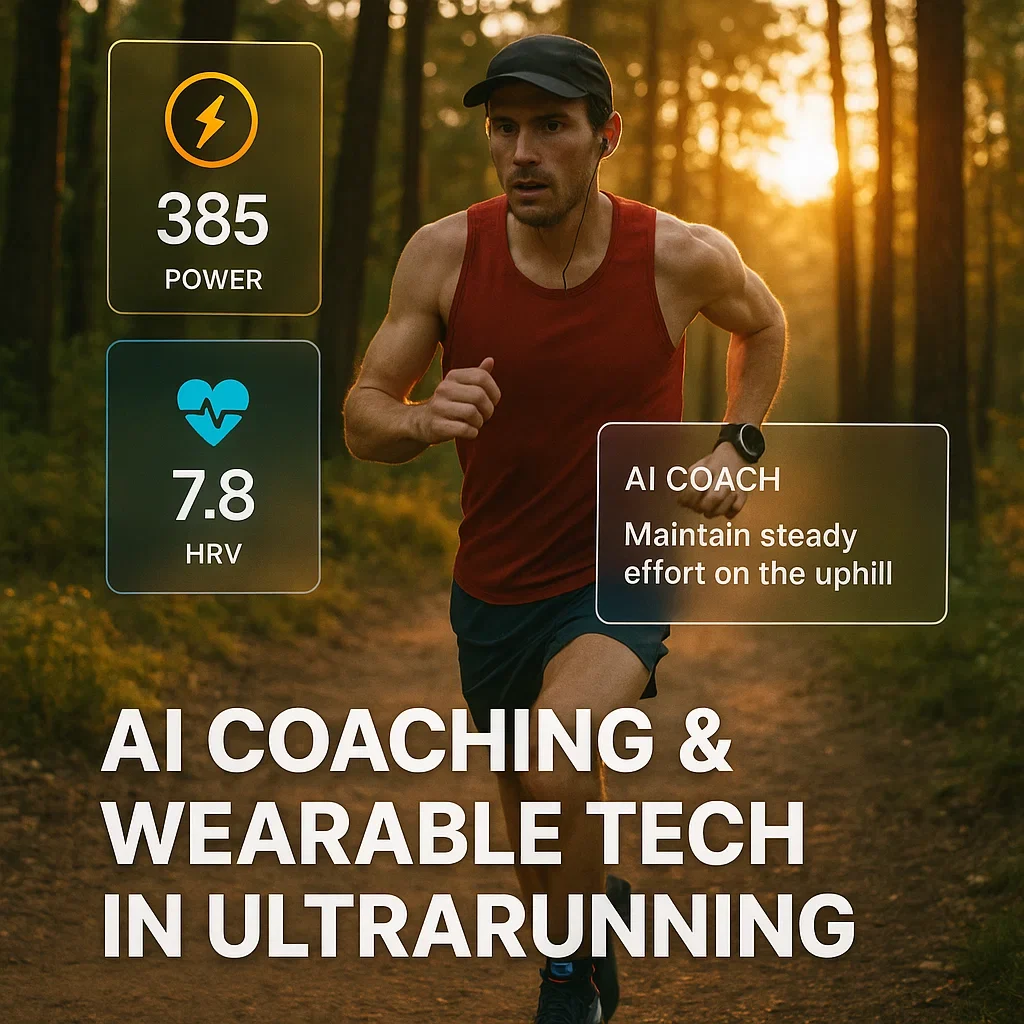
❓ Frequently Asked Questions
🤖 What exactly is an AI coach for ultramarathon training?
An AI coach uses machine learning to analyze your runs, adapt plans in real-time, and give advice just like a digital coach—only with endless patience and data!
⚡ How does Stryd critical power help my training?
Stryd’s critical power gives you a real-time, terrain-proof intensity metric—so you can pace smarter on any surface and avoid “bonking” late in a race.
💓 Are HRV apps really accurate for ultra athletes?
With a good sensor (like a chest strap or advanced wearable), HRV apps like HRV4Training and Whoop are surprisingly reliable—especially for long-term trends.
⌚ Coros vs Garmin—what’s better for a 100-mile race?
Coros leads for battery life and simplicity; Garmin for mapping, analytics, and ecosystem. Pick what fits your race style (and wrist!).
🛰️ Should I get the latest smart ring or stick with a watch?
For 24/7 recovery and sleep, a ring (like Oura) shines. For live pacing, navigation, and workouts, a watch is still king for most ultrarunners.
🌙 Does tracking HRV and sleep really improve my ultra results?
Yes! Knowing when to push and when to rest is the secret weapon of healthy, consistent ultra training.
🛠️ What’s the most common tech mistake ultrarunners make?
Relying too much on numbers. Data is a tool—not the rule. Trust your experience and don’t be afraid to ignore the gadgets now and then.
📊 Can AI coaching replace a real coach?
Not entirely—AI is fast, affordable, and smart, but can’t replace real human insight or the motivation a good coach brings to the table.
🏆 Which metrics should I track as an ultra runner?
Power (Stryd), HRV, sleep, long run performance, and overall mood/energy. Keep it simple—don’t chase every number.
⏱️ How do I avoid data overload?
Set key priorities (like recovery and power), automate your syncing, and review only what actually changes your training.
💡 Does more expensive tech mean better training?
Not always. Basics done right beat fancy features you’ll never use. Get what motivates you, not what’s trendy.
💧 What about hydration, fueling, and nutrition apps?
Tracking food and hydration (MyFitnessPal, NutriSense, Fuelin) is helpful for dialing in race day and recovery—especially if you struggle with GI issues.
🌲 Is all this tech trail-proof (rain, mud, falls)?
Most modern gear is water-resistant and built for a beating—but always check ratings, and don’t forget to dry your gadgets after wild runs!
🔋 How do I make sure my watch or sensor survives a 24-hour ultra?
Use battery saver modes, turn off unneeded features, and bring a tiny power bank for mid-race charges. Practice charging on the go!
🧑💻 Can I export my data for analysis?
Absolutely! Most apps (Garmin, Coros, Stryd, HRV4Training) let you export data to CSV or sync with platforms like TrainingPeaks and Strava.
📲 Will AI training apps work on my phone/watch?
Most leading apps (Runna, Athletica, TrainAsONE) have mobile versions and direct sync with popular watches. Always check compatibility before you sign up!
📅 How often should I update my training plan?
Weekly is best—let your AI coach or real coach adapt plans to match life, recovery, and “real” energy.
🎯 What if my gadgets or apps disagree with each other?
Don’t stress! Use the average, or go with the device you trust most. The big picture (trend) matters more than a single reading.
🥇 Can wearable tech really help me get a PR?
Absolutely—if you use it wisely. Smart pacing, better recovery, and timely adjustments are the real tech superpowers!
🧘♂️ What’s the biggest tech lesson for ultra runners?
Use gadgets to empower, not distract. Run mindful, stay present, and let tech serve your goals—not the other way around.
🔗 Further Reading & Resources
AI in Ultramarathon Training: The Ultimate Performance Guide
A deep-dive into the science and real-world impact of AI coaching in long-distance running. Stryd Power Guide for Ultrarunning
Everything you need to know about using power data for smarter pacing and training. HRV Basics for Ultra Endurance Athletes
Practical HRV strategies for optimizing your recovery and training blocks. Best Running Watches for Ultramarathon (2025)
An up-to-date, in-depth review of the top GPS watches for endurance adventures.
A deep-dive into the science and real-world impact of AI coaching in long-distance running. Stryd Power Guide for Ultrarunning
Everything you need to know about using power data for smarter pacing and training. HRV Basics for Ultra Endurance Athletes
Practical HRV strategies for optimizing your recovery and training blocks. Best Running Watches for Ultramarathon (2025)
An up-to-date, in-depth review of the top GPS watches for endurance adventures.
More trusted resources for curious runners:
- Runner’s World – Best Running Watches of 2025 – Independent reviews and real-user feedback.
- iRunFar – Best GPS Running Watches for Ultras – Trail-focused, long-term testing in real race conditions.
- Scientific Study: The Impact of Wearable Tech on Endurance Training – Peer-reviewed science behind HRV, power meters, and more.
- TrainRight – How to Use HRV in Ultramarathon Training – Practical advice from endurance coaches.
📝 Quiz: How Tech-Savvy Is Your Ultra Training?
- What does “HRV” stand for and why does it matter in ultra training?
- Which device gives you real-time running power data—HRM strap or Stryd footpod?
- Coros is best known for its… (A) Fancy Maps (B) Battery Life (C) Heart Rate Analytics
- True or False: Higher HRV usually means you’re more recovered.
- Name one app that offers AI coaching for ultrarunners.
- Why might you want a wearable like Oura or Whoop in your training routine?
- What does Stryd’s “Critical Power” help you determine?
- Which brand offers “Body Battery” analytics: Garmin or Coros?
- True or False: It’s always best to follow your tech data, even if you feel terrible.
- What’s a simple tip for making your training ecosystem less stressful?
✅ Quiz Answers
- Heart Rate Variability; it tracks your readiness and recovery status.
- Stryd footpod.
- (B) Battery Life.
- True.
- Athletica, TrainAsONE, Runna, or Humango.
- To track sleep, recovery, and HRV for smarter rest and harder training days.
- Your sustainable threshold power for training and racing.
- Garmin.
- False—always listen to your body first!
- Automate data syncs, use fewer key metrics, or start simple and scale up.
🎉 Share your quiz results!
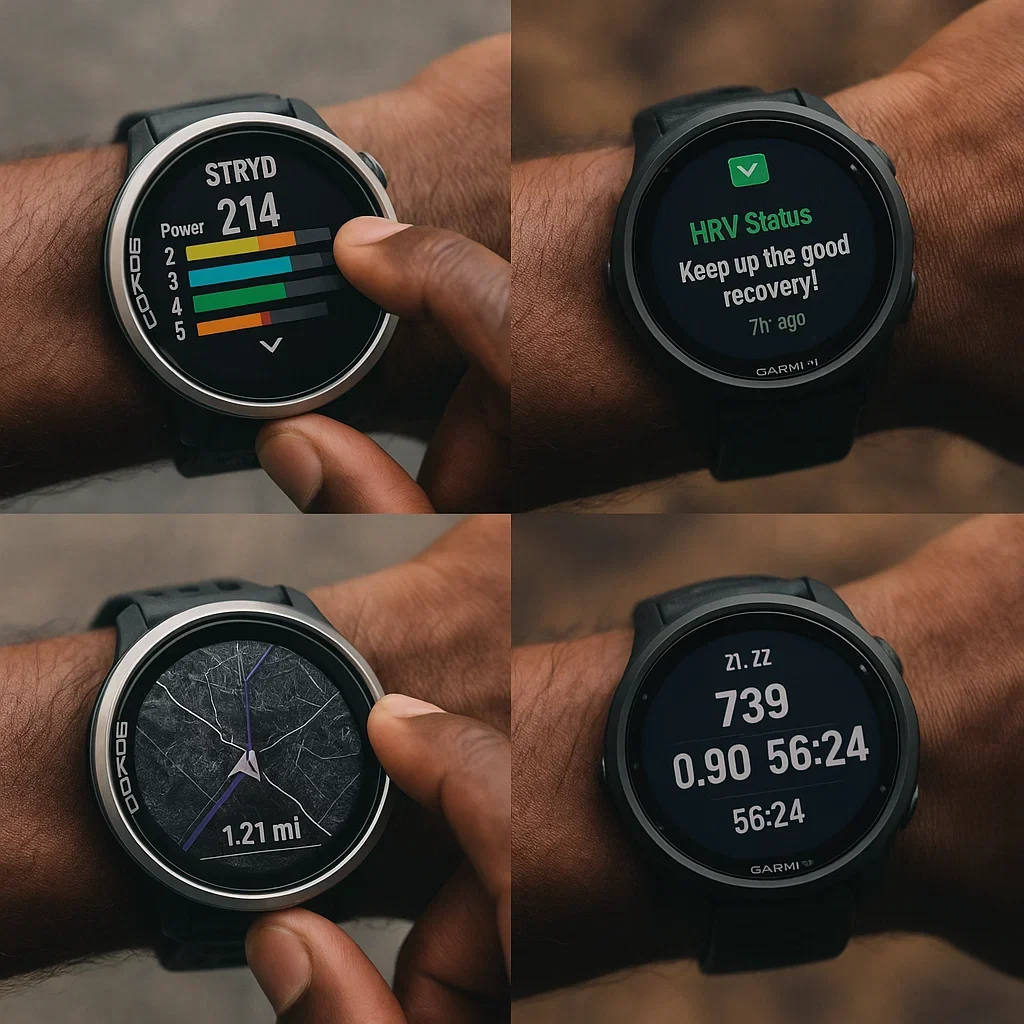
📚 Recommended Books & 🎥 Videos
📘 Top Books for Ultrarunners
-
 Training Essentials for Ultrarunning
Training Essentials for Ultrarunning
Jason Koop’s comprehensive guide to smarter training and racing. -

-

-

-

🎥 Must-Watch Ultramarathon Training Videos
-
 10-Week Ultra Marathon Training Plan
10-Week Ultra Marathon Training Plan
A comprehensive guide to preparing for a 100-mile endurance run. -
 43km Long Run Workout
43km Long Run Workout
An in-depth look at a challenging long run session for ultra preparation. -
 27 Mile Day of Ultramarathon Training
27 Mile Day of Ultramarathon Training
A detailed breakdown of a high-mileage training day. -
 Running My First Ever Ultra Marathon 2025
Running My First Ever Ultra Marathon 2025
A personal journey through the challenges of an inaugural ultra race. -
 A Week of Running | The Road to 100mi 2025 ::contentReference[oaicite:1]{index=1}
A Week of Running | The Road to 100mi 2025 ::contentReference[oaicite:1]{index=1}🏁 Final Thoughts: Running Further, Smarter, Happier
You made it to the end—almost as impressive as finishing a 100-miler! 🎉
The world of ultrarunning is evolving, and technology is more than just “bells and whistles.” AI coaches, smart wearables, and HRV apps aren’t here to replace grit and trail wisdom—but they’re powerful tools to help you run further, recover smarter, and (yes) enjoy the ride just a bit more.
Remember: The best device is the one that gets you out the door, and the best data is the smile you wear at the finish line.
Whether you’re a tech geek or a minimalist, let your curiosity drive your journey. Mix the science with the soul. Try new gadgets, learn from each mile, and never let a missed sync or flat battery steal your joy.
Ready to go next level?- Explore more ultra guides and tech tips here on umit.net
- Share your questions and race stories in the comments below
- Send this post to a running buddy who needs a little AI magic!
See you on the trails—and may your battery (and legs) go the distance!🔍 People Also Ask: Quick Answers
What’s the best AI running coach app in 2025?
Top picks include Athletica, TrainAsONE, and Runna—each adapts workouts, syncs with your watch, and is highly rated by ultrarunners.Is HRV better than heart rate for ultramarathon training?
HRV is better for tracking recovery/readiness, while heart rate shines for real-time effort. Using both gives you the best of science and feel.How do I sync Stryd with Garmin and Strava?
Use the Stryd app to link with your Garmin Connect account. Activities upload automatically to Strava—just connect accounts in Stryd PowerCenter.Does AI coaching work for beginners?
Absolutely! Most AI apps are beginner-friendly—just input your experience and goals, and the plan will scale to your fitness.Can wearable tech help prevent injury?
Yes—tracking trends in HRV, sleep, and recovery can warn you before overtraining strikes. Listening to your body is key!🔗 Related Ultra Guides
💬 Ultra Runners Speak: Your Stories & Comments
- Jess K.: “Using an AI coach kept me consistent—and my Coros finally lasted longer than my legs in a 100K!”
- Arda T.: “Whoop’s HRV warnings convinced me to rest. No more back-to-back overtraining weeks. Game changer!”
- Sarah F.: “Lost Pace’s recovery guide + Stryd = my first sub-24h finish. Thank you for the tech tips!”
Share your experience or ask a question in the comments below—your wisdom could be the boost another runner needs!📊 Quick Poll: What’s Your Can’t-Live-Without Tech?
See poll results & join the discussion in the comments!📬 Get the Lost Pace Ultra Newsletter
Want exclusive ultra training tips, gear reviews, and bonus content?
Subscribe now and get your free AI-powered training checklist (PDF)—delivered straight to your inbox!No spam. Only the smartest ultra advice—Lost Pace promise!


About the Author
Lost Pace is an ultramarathon runner, shoe-tester and the founder of umit.net. Based year-round in Türkiye’s rugged Kaçkar Mountains, he has logged 10,000 + km of technical trail running and completed multiple 50 K–100 K ultras.Blending mountain grit with data, Lost analyses power (CP 300 W), HRV and nutrition to craft evidence-backed training plans. He has co-written 260 + long-form guides on footwear science, recovery and endurance nutrition, and is a regular beta-tester of AI-driven coaching tools.
When he isn’t chasing PRs or testing midsoles, you’ll find him sharing peer-reviewed research in plain English to help runners train smarter, stay healthier and finish stronger.
Ultrarunner · Data geek · Vegan athlete
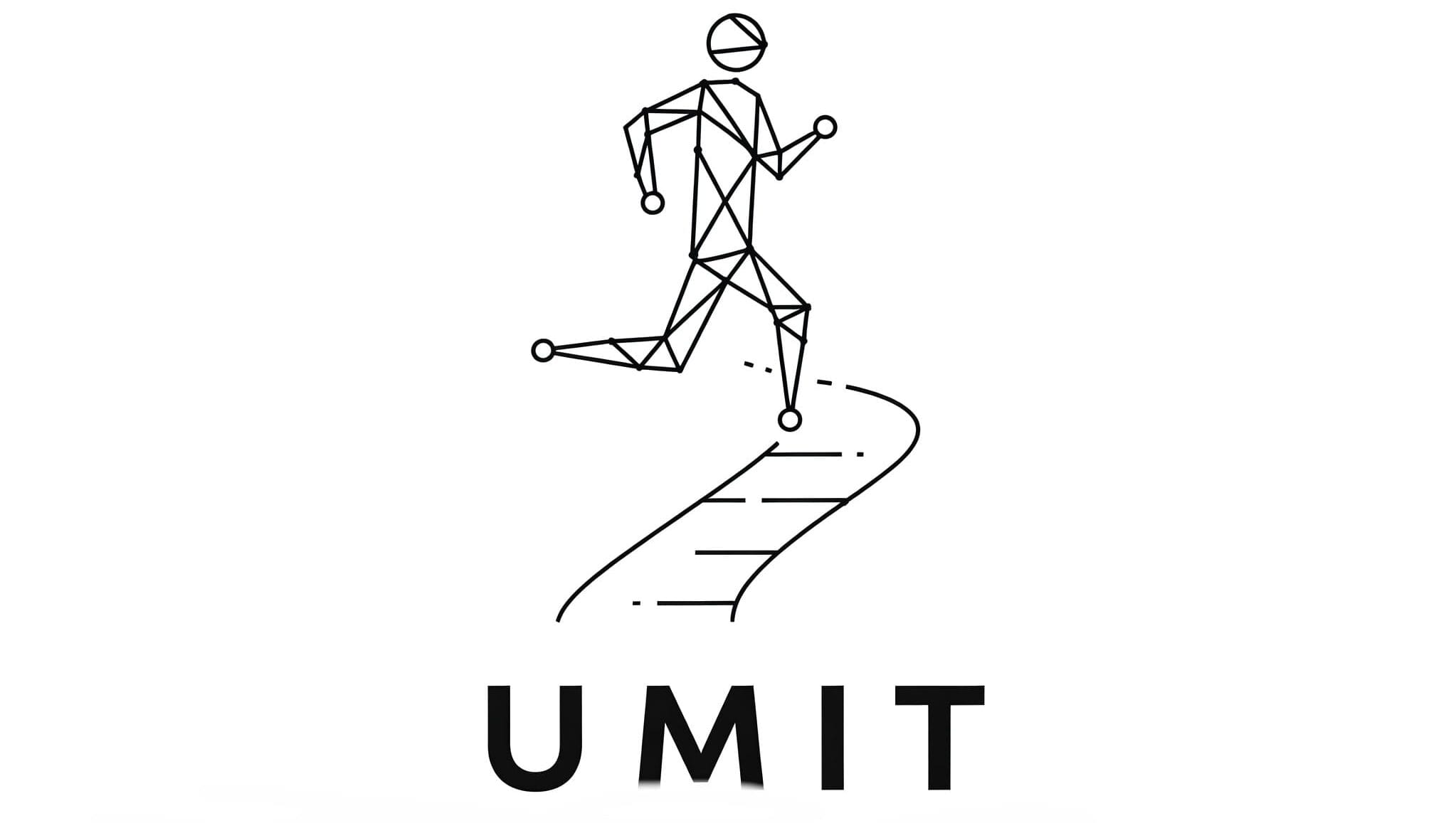
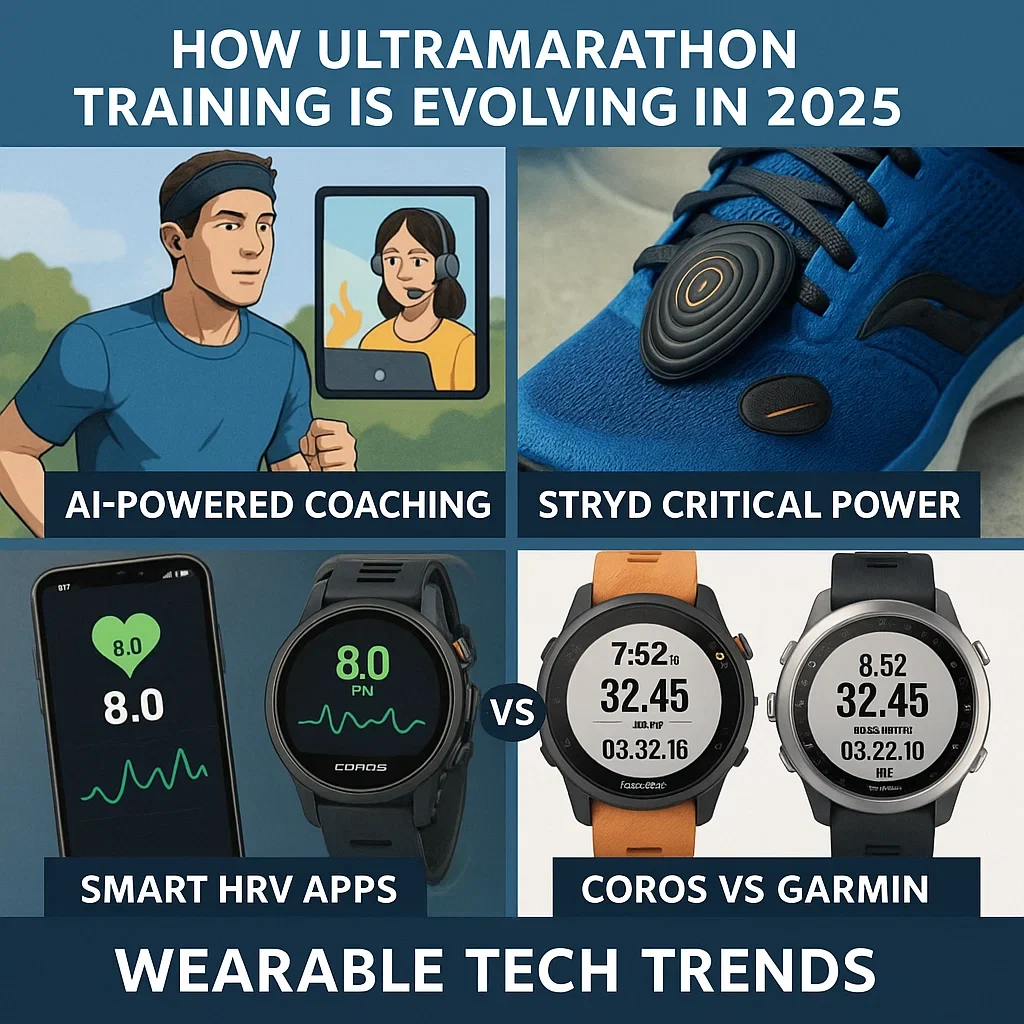







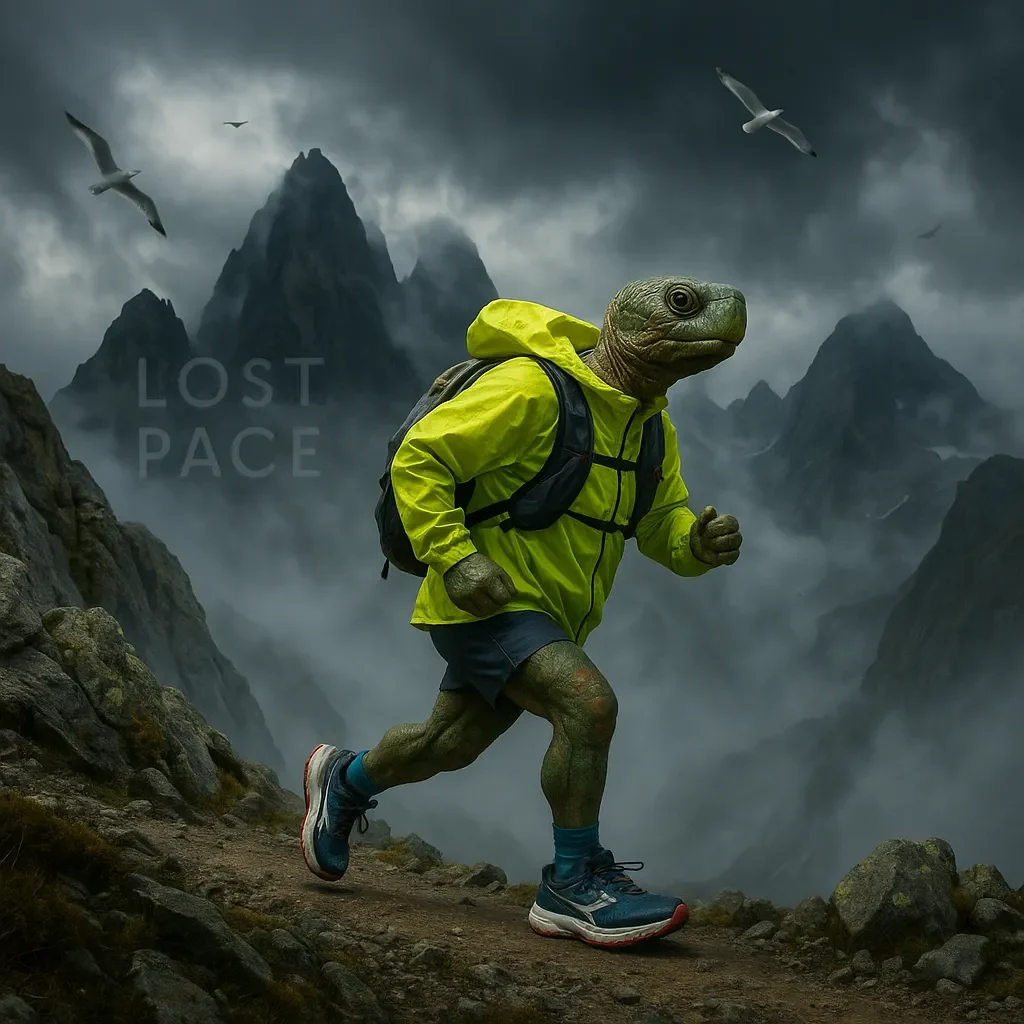
I have been searching for content like this everywhere finally, someone who explains things clearly. Amazing job!